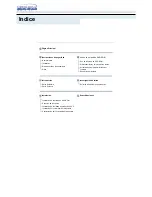
VLT
®
4000 VT
■
Efficiency
To reduce energy consumption it is very important
to optimize the efficiency of a system. The
efficiency of each single element in the system
should be as high as possible.
Efficiency of VLT 4000 VT(
η
VLT
)
The load on the AFD has little effect on its efficiency.
In general, the efficiency is the same at the rated
motor frequency f
M,N
, regardless of whether the
motor supplies 100% of the rated shaft torque or
only 75%, i.e. in case of part loads.
The efficiency declines a little when the switching
frequency is set to a value of above 4 kHz (parameter
407
Switching frequency
). The rate of efficiency will
also be slightly reduced if the line voltage is 460 V, or
if the motor cable is longer than 100 feet.
Efficiency of the motor (
η
MOTOR
)
The efficiency of a motorconnected to the AFD
depends on the sine shape of the current. In gene-ral,
the efficiency is just as good as with line operation. The
efficiency of the motor depends on the type of motor.
In the range of 75-100% of the rated torque,
the efficiency of the motor is practically constant,
both when it is controlled by the AFD and
when it runs directly on line.
In small motors, the influence from the U/f characteristic
on efficiency is marginal; however, in motors from 15
HP and up, the advantages are significant.
In general, the switching frequency does not affect
the efficiency of small motors. Motors from 15 HP
and up have their efficiency improved (1-2%). This
is because the sine shape of the motor current is
almost perfect at high switching frequency.
Efficiency of the system (
η
SYSTEM
)
To calculate the system efficiency, the efficiency of
VLT 4000 VT (VLT) is multiplied by the efficiency
of the motor (
η
MOTOR
):
η
SYSTEM
=
η
VLT
x
η
MOTOR
Based on the graph outlined above, it is possible to
calculate the system efficiency at different speeds.
MG.40.A7.22 - VLT is a registered Danfoss trademark
130












































